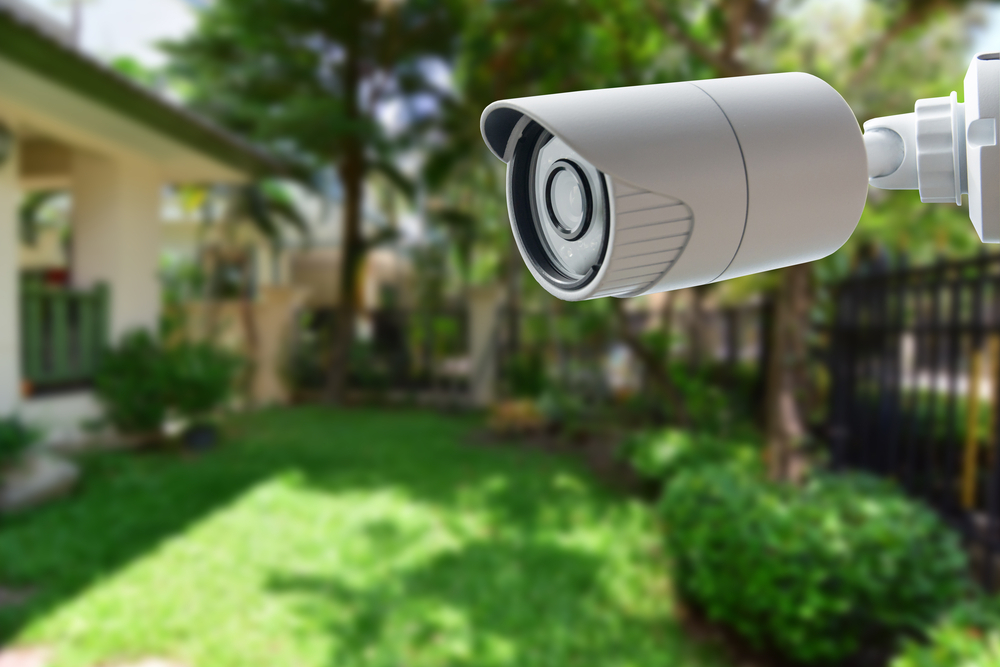What’s the Best DSL Modem?

A reliable modem offers a secure, stable internet connection so that you can browse the web, work, play games, stream movies, and more. If you don’t own a modem or are looking to update an old one, you’ll encounter many models with distinct specifications. For digital subscriber line (DSL) internet, you’ll be looking at ADSL and VDSL modems—which support different internet speeds.
In this guide we’ve considered various factors and reviewed a variety of DSL modems to help you choose the best DSL modem for you and your needs.
Factors to consider when buying a DSL modem
Before buying a DSL modem, it’s important to determine whether the device is compatible with your provider. Some of the top DSL internet providers in the US include Frontier, CenturyLink, AT&T, Windstream, and Verizon.
Although DSL doesn’t offer the fastest internet speeds around, it does provide service to rural areas that other options may not be able to reach. Also, DSL internet tends to be a more affordable choice that can serve the needs of smaller households with light internet usage.
So what else do you need to know to choose the right DSL modem? Modem types, ports, compatibility, and security are essential considerations.
Types of DSL modems
There are two types of DSL modems: ADSL and VDSL. ADSL stands for asymmetrical digital subscriber line and is an older technology that allows internet users to receive data via a telephone line. On the other hand, VDSL, which stands for very high bit-rate digital subscriber line, is a newer technology that delivers faster connection speeds than ADSL.
Ports
You should always check the number of ports available on a DSL modem to determine whether it accommodates all of your devices. It generally makes sense to go for a modem that allows for more simultaneous wired connections.
Compatibility
Not all modems are designed to be compatible with all internet provider’s services. Check the modem sales page for companies the modem is compatible with, or contact your internet service provider (ISP) and ask for device recommendations.
Security
With the rise in hacking and other internet crime, security is a serious factor to consider when buying a modem. The right device should protect your personal information and Wi-Fi. For the best protection, you should look for a modem that has at least a firewall and WPA/WPA2 encryption.
Best DSL modems
When shopping for DSL internet service, you will find that some DSL providers offer modems that work exclusively with their networks. While some of these modems are among the best devices offered for DSL internet, choosing one of them limits you to using a single ISP. If you expect to move or switch providers, that may not be the best option.
The good news is that trusted technology manufacturers offer DSL modems with a wide range of performance levels and price points. You can familiarize yourself with those options to get an idea of what you need, but checking for compatibility with your ISP is a must before you buy.
Netgear Nighthawk AC1900
The Netgear Nighthawk AC1900 supports ADSL/ADSL2/ADSL2+ and VDSL/VDSL2 with auto detection for Universal DSL support. It’s compatible with almost any ISP via its Gigabit Ethernet WAN port. This DSL modem delivers some of the most impressive speeds you could ever hope for in a modem thanks to a dual-core processor running at 1GHz. It also offers some additional unique features such as an Open VPN server and Broadcom TurboQAM support for higher Wi-Fi speeds of up to 600Mbps.
Another advantage of the Nighthawk AC1900 is that it’s lightweight, thanks to a compact design that is hard to come by in high-powered modems. Once installed and fired up, you can check performance on the intuitive display panel. The device also comes with three internal antennas to ensure you get a strong Wi-Fi signal in your entire household.
Pros
- Three antennae
- Compact and portable design
- 600Mbps 2.4GHz and 1300Mbps 5GHz
Cons
- No MU-MIMO
- Needs a wired connection for the fastest speeds
Motorola MD1600
The Motorola MD1600 is arguably one of the most stable and reliable modems in the market today. It comes with a dual-band connection that allows multiple devices to be in use without interrupting each other. The built-in router includes 4 Gi-E ports, a firewall, WPA/WPA2 wireless security, and VPN capability. This DSL modem/router combo offers fast and easy installation while saving you space by reducing wires. Motorola MD1600 is compatible with most DSL providers and devices, including smartphones, computers, game stations, and tablets.
Pros
- 4-gigabit Ethernet ports
- Compatible with most DSL providers
- Dual-band connection for connecting multiple devices
Cons
- Not the fastest option on the market
Netis DL 4323
If you need a modem/router that offers a solid internet connection at an affordable price, then the Netis DL 4323 has you covered. It provides internet access of up to 24Mbps downstream and wireless speeds of up to 300Mbps. The modem leverages smart technology to route traffic and ensures that you don’t experience slowdowns when multiple devices are connected and are in use simultaneously. This router is compatible with most major DSL providers, too.
Pros
- Up to 300Mbps
- Works with most carriers
- Budget-friendly
Cons
- Don’t expect the absolute top performance
Netgear Broadband ADSL2 Plus Modem
If you are in the market for a highly-portable DSL modem, the Netgear Broadband ADSL2 Plus Modem has you covered. This compact and high-performing DSL modem can be set up easily and installed anywhere. The device is compatible with multiple systems, including Windows, Mac OS, Linux, Unix, and more. Because it is an ADSL2+ modem, you are guaranteed the best service prioritization for data. It is also an affordable option for a device delivering 1000Mbps of bandwidth capacity and a one year warranty.
Pros
- Up to 300Mbps
- Very affordable
- Highly portable
- Compatible with multiple systems
Cons
- Limited bandwidth capacity
TP-LINK ADSL2 td8816
TP-Link is highly acclaimed for its routers and other networking devices. The TP-LINK ADSL2+ Modem Router or TD 8816 DSL is no exception. The modem supports Dynamic Host Configuration Protocol (DHCP) designed to assign internet protocol (IP) addresses to all connected devices automatically. It also supports Universal Plug and Play (UPnP) on ports to ensure you get excellent bandwidth capacity on your local network.
Delivering up to 24Mbps downstream speed, this modem can support users who need to complete work tasks at home. It also comes with robust security features thanks to the triple firewalls. Other notable features include two year warranty period, 1000Mbps bandwidth capacity, and quality of service (QoS) policies to meet end-user requirements.
Pros
- Delivers up to 24Mbps downstream speed
- Double upstream data rate
- Three layers of firewall
Cons
- Limited bandwidth capacity
- Must purchase power cables separately
NETGEAR D2200D ADSL Modem
The NETGEAR D2200D ADSL modem is an affordable option from Netgear that has all of the features you need for everyday internet use. This DSL modem supports a standard 300Mbps bandwidth capacity, making it ideal for your usual online activities such as watching high-quality video streams. It also features 4-gigabit Ethernet ports and a single DSL port to help you max your speed to 1000Mbps bandwidth on your local network. Other notable features include WPA/WPA2 security protocol, IPv6 dual-stack technology, 2×2 11n Wi-Fi support, and the TR-069 to enable you to manage your modem remotely.
Pros
- Delivers up to 24Mbps downstream speed
- Four-port wireless router
- Robust security features
- Easy installation via an intuitive user interface
Cons
- Limited ISP compatibility
Frequently asked questions (FAQs)
What does DSL mean on a modem?
DSL stands for digital subscriber line. This means that the modem connects devices to the digital subscriber line provided by your internet service provider.
What is the difference between a DSL modem and a cable modem?
The main difference between the two modems is that a DSL modem unit is hooked up directly to your phone line. On the other hand, a cable modem connects to the service network through a coaxial cable.
How much can I expect to pay for a DSL modem?
Some providers rent out their DSL modems for a monthly fee of between $5 and $10. If you prefer buying a device over renting one, expect to pay between $50 and $150.
Why is my DSL modem light blinking?
Checking your device’s user manual is the best way to understand what the lights on your modem mean. However, if you notice a light on your DSL modem flashing, that likely signals that it is trying to sync with a network.
How do I fix a blinking DSL modem light?
If your DSL modem light is blinking, there are several steps you can take to address the issue. Here are common fixes you can try:
- Check the cables. The first thing you want to do is check the connectors and cables, especially the DSL cable. You should confirm that the DSL cable is firmly connected to the correct port.
- Restart the modem. If the problem remains unresolved, you can turn off the modem for a few minutes and then turn it back on. If your modem has a battery, you should remove it before disconnecting the modem and put it back before reconnecting the modem to the power source.
- Contact your ISP customer support. If neither of the above works, you should contact your ISP’s customer support and they should be able to help you troubleshoot the problem.
How do I know my DSL connection is working?
There are several ways to determine whether your DSL is working or not. These include:
- Access the modem’s settings by typing the IP address indicated in your device’s manual. Most DSL modems provide the ability to test their own line from within the modem. This way, you can easily diagnose an issue in your modem or DSL line.
- Contact your ISP’s technical team to test your modem from their side of the connection. ISP technical support teams have the tools and skills to test your modem’s connection and speed from their end. Once they diagnose an issue, they can help you resolve any issues and get your device in optimal working condition.
*Pricing varies by location and availability. Speeds may vary. All prices subject to change; for current pricing and availability visit our internet service page. Prices as of 4/19/22.
Disclosure | Updater articles are based on our own data and research, independent from partner relationships. We are not compensated by partners for information and opinions presented here. Our Editorial Terms of Service can be found here.














